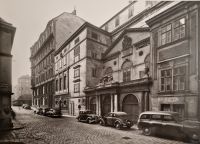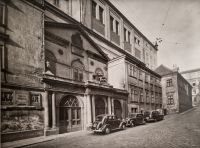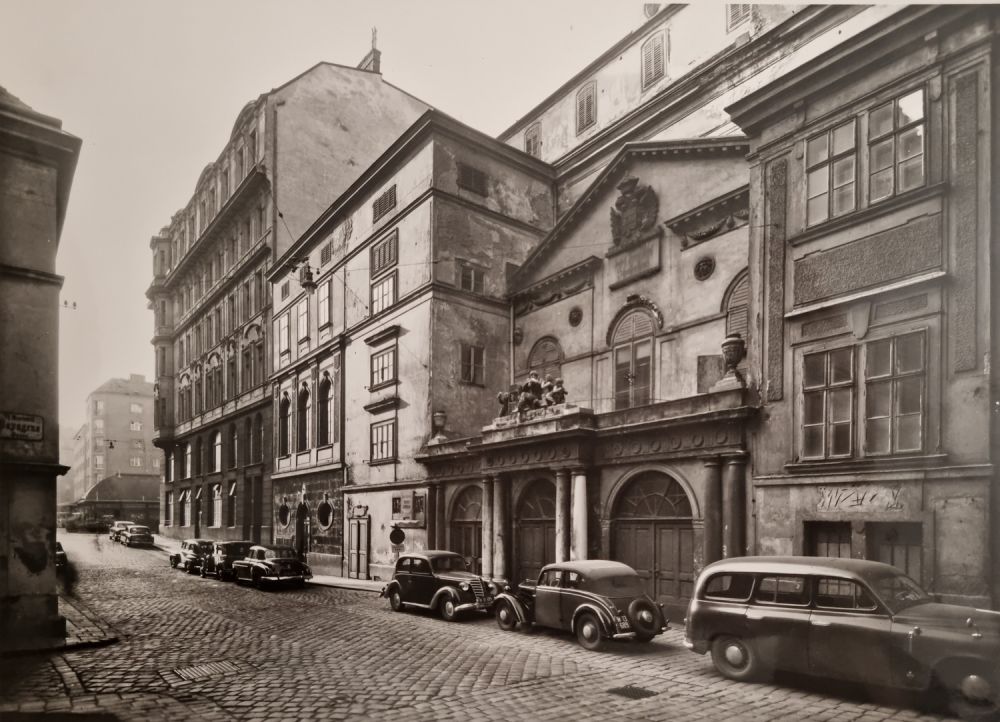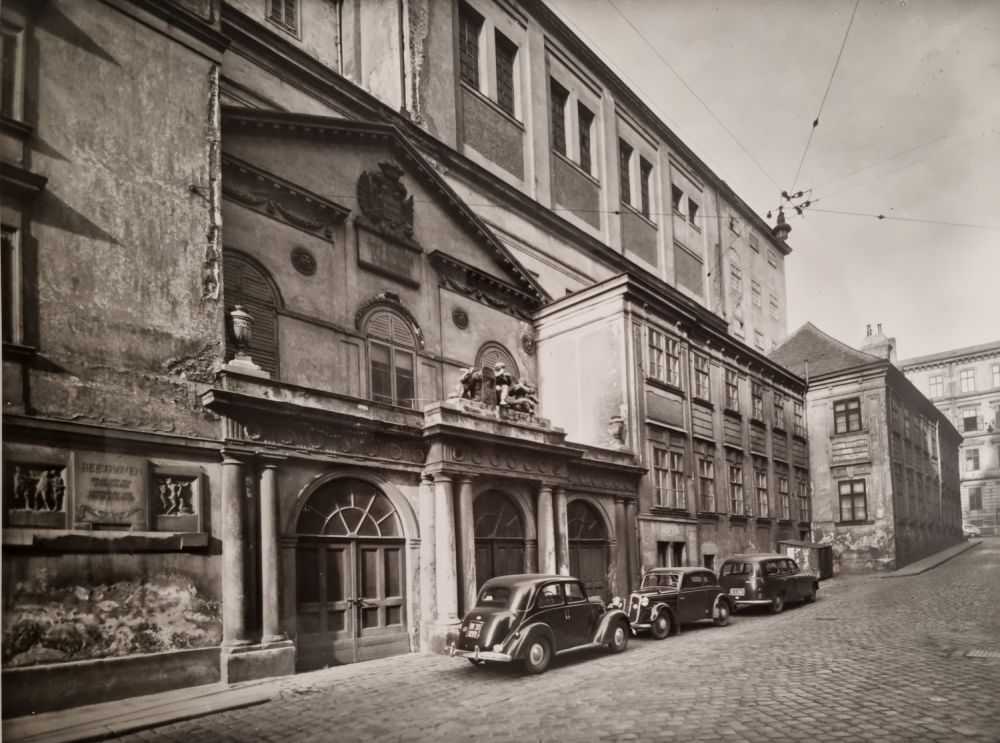"Theater an der Wien – Außenansicht – Zuschauereingang"
gelatin silver print
titled on verso (ink)
At the end of the 18th century, an itinerant troupe of actors who gave theatrical performances in the suburb of Wieden built a theater (Freihaustheater) in the large courtyard of the Starhemberg Freihaus as part of a conversion project. Emanuel Schikaneder - a pioneer of German-language theater and German-language opera; he himself became famous as the librettist of Mozart's Magic Flute - ran the Freihaustheater until it moved to its current location. In the beginning, the new Theater an der Wien was a multifaceted venue, staging not only plays, operas, operettas and concerts, but also circus performances in the early days.
The theater continued to operate for many decades until 1939, although the doors were repeatedly closed for economic reasons.
Immediately after the end of the Second World War, the theater was ceremoniously opened with Beethoven's Fidelio as an alternative stage for the State Opera, which had been badly damaged by bombs. The State Opera used the building until 1955 - as shown in the pictures. After that, the building was to be converted into a utility building or demolished. The municipality of Vienna prevented the demolition at the last moment, bought the venerable building, had it thoroughly restored and rebuilt while preserving its historical character and reopened it in 1962 as the Vienna Festival Theater with works by Mozart, Schubert and Beethoven. Since then, the theater has established itself as a musical stage and gained a European reputation.
(Geschichtewiki.wien.gv.at, translated with deepL)





